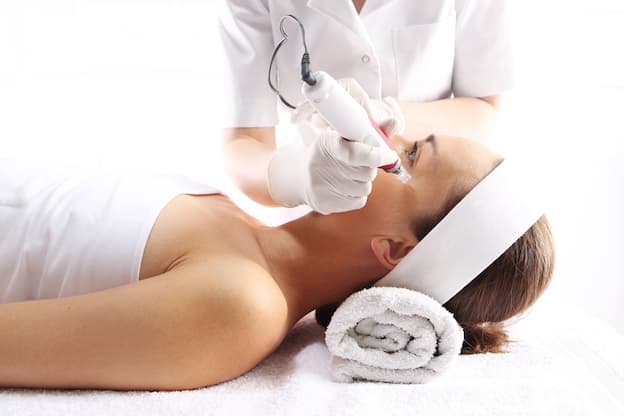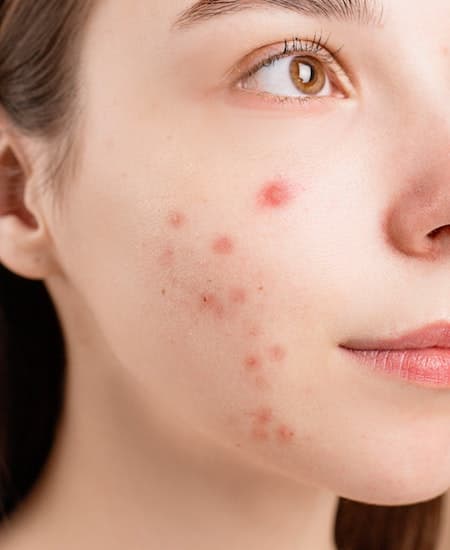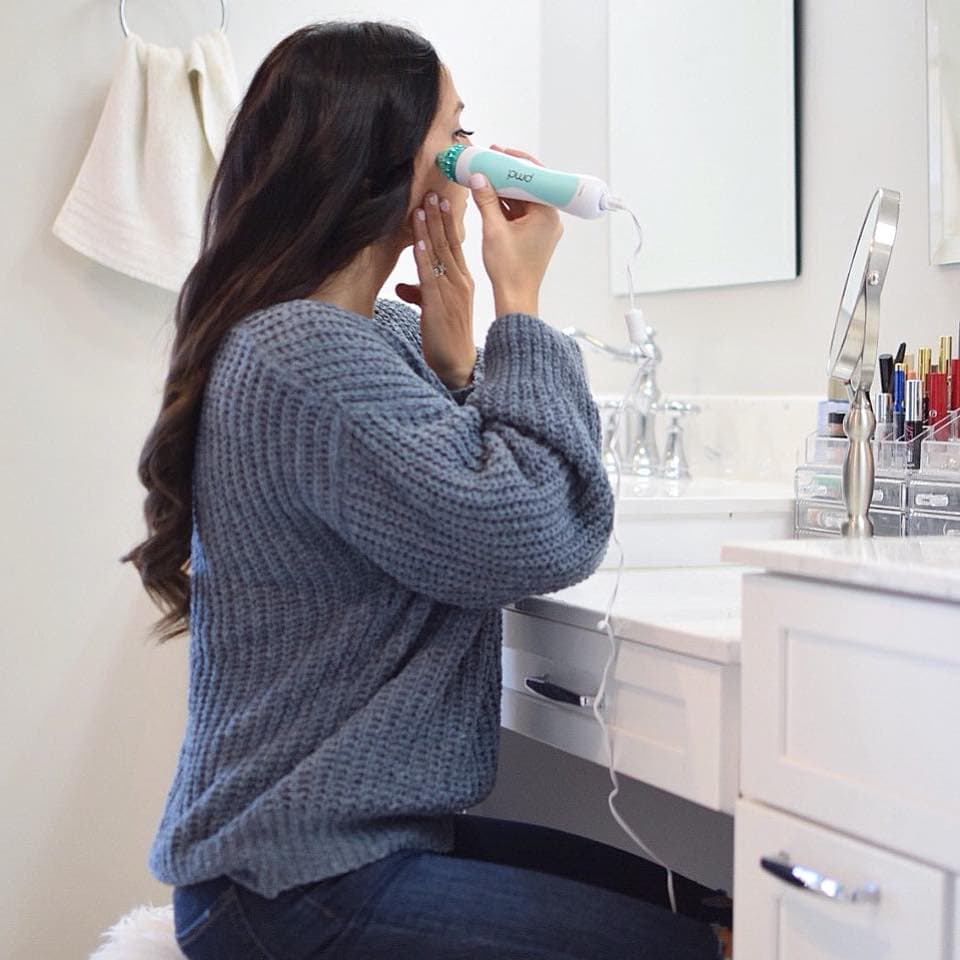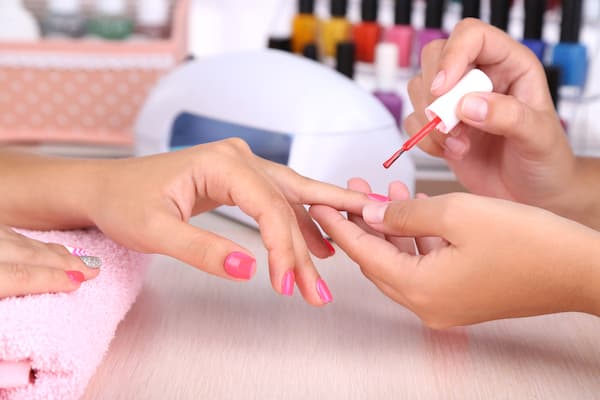Chemical Peel Vs Microneedling: Which Is Best For Your Skin?
Microneedling and chemical peels are two popular skin treatments used to improve the appearance of the skin by helping to reduce the signs of aging, scarring, and sun damage. Both treatments can produce amazing results, but there are key differences between them.
Microneedling vs. Chemical Peel: What’s the Difference?
If you’re trying to decide which is right for your skin type and problems, it’s important to understand the differences between the two, as well as the benefits and risks so you can make an informed decision.

Overview of Microneedling
Microneedling is a minimally invasive cosmetic procedure that’s used to reduce the appearance of fine lines, wrinkles, age spots, and other skin issues.
During the treatment, a dermatologist uses a Dermapen – a cosmetic tool with tiny needles – to create small puncture wounds in the skin. This prompts your body’s healing process to start, which increases your collagen production to make the appearance of your skin more youthful looking.
Benefits of Microneedling
Microneedling triggers the body’s natural healing processes, which can result in a variety of benefits. These benefits include, but are not limited to:
- Increased collagen production
- Improved skin tone and texture
- Reduced wrinkles and fine lines
- Improved skin hydration
Risks of Microneedling
It’s important to understand that while a microneedling treatment can produce excellent results, it isn’t an instant fix.
Most people need between three to eight treatments before they start really seeing dramatic results. It can take several weeks to heal, and therefore, you need several weeks between treatments.
Some of the risks of microneedling include:
- Minor pain
- Redness
- Peeling and flaking skin
- Bleeding and/or bruising
- Infection
- Scarring

Overview of Chemical Peels
A chemical peel also improves the appearance of the skin, but the process is different from microneedling. During a chemical peel, a chemical solution is applied to the skin, which causes it to exfoliate and eventually peel off.
This reveals a new skin that’s often smoother, brighter, and less wrinkled than the old skin. Chemical peels are commonly used to treat a variety of skin problems, including sun damage, wrinkles, freckles, acne, and acne scars.
Depending on the type of chemical peel used, the procedure can take anywhere from a few minutes to several hours.

Benefits of Chemical Peels
Chemical peels are one of the more popular cosmetic treatments because they’re not invasive. They’re used to treat a variety of skin conditions, including, but not limited to:
- Some acne
- Fine lines around your eyes or mouth
- Wrinkling from aging or sun damage
- Age spots, liver spots, and uneven skin tone
- Scaly patches and rough skin
- Dark patches of skin that arise during pregnancy or from taking birth control pills
- Dull complexion
Risks of Chemical Peels
Chemical peels pose more risks than microneedling and they aren’t usually effective for people with deep facial lines, deep scarring, or more severe wrinkles.
Some of the risks of chemical peel treatments include:
- Infection
- Changes in skin color
- Redness
- Swelling
- Scabbing
Deep peels use carbolic acid, which could possibly damage the kidneys, heart, and/or liver. Because of this, it’s important to check with your doctor before you have the treatment.
Types of Chemical Peels
There are three types of chemical peels:
- Superficial peels: These peels are completed in a series. They remove the top layer of your skin, and you should see subtle improvements over time. Most people heal from a light chemical peel within hours or days.
- Medium-level peels: During this procedure the top layer and the top part of the middle layer of your skin are removed. It’s ideal for people who have an uneven skin tone, discoloring, or acne scarring. It typically takes about a week to recover.
- Deep chemical peels: This type of peel provides the biggest results. However, recovery time is significantly longer, and it requires pretreatment that can last upwards of eight weeks. It’s a good option for people with extensive sun damage, deeper wrinkles and lines, or precancerous skin growths known as keratosis.

Procedure recovery times
The recovery time for microneedling is typically less than that of a chemical peel. It can take several weeks for your skin to fully heal completely. However, most people can return to their regular activities the same day and only experience minimal redness or swelling for up to 24 hours.
The recovery time for a chemical peel depends on the type of peel you have. People who have light peels or medium-level peels typically heal within a few weeks. However, deeper peels take longer to heal. If you decide to have a deep chemical peel, expect the recovery time to last around a month.
Should you have microneedling or chemical peel treatments?
When determining which treatment to use, your overall needs and goals should be the primary consideration. Both microneedling and chemical peels can be used to treat several skin conditions, but each has its own unique characteristics.
Microneedling is best suited for those who want to reduce the appearance of fine lines and wrinkles, improve skin texture and tone, reduce the appearance of scarring, and/or increase the skin’s overall firmness.
On the other hand, chemical peels are best suited for those who want to reduce the appearance of pigmentation and dark spots, exfoliate the skin, and reduce the appearance of acne. Additionally, chemical peels can also help to reduce the appearance of fine lines and wrinkles.
Lighter peels use salicylic acid which is good for people with active acne because it helps prevent future breakouts. Ultimately, it is best to consult with a skin care specialist to determine the best treatment for your skin.
FAQs
Can you do a chemical peel and microneedling at the same time?
You can have a light skin peel and microneedling done at the same time. Doing these treatments together help reduce the appearance of fine lines and wrinkles, give you the appearance of younger-looking skin, and help brighten your complexion.
Which has better results: chemical peel or microdermabrasion?
Chemical peels provide better results for people with more serious skin conditions and those with deeper wrinkles and scarring. Microdermabrasion is best for people with superficial skin imperfections – fine lines, enlarged pores, and sun spots.
Is a chemical peel or microneedling better for pigmentation?
Overall, chemical peels are the better option for people with pigmentation concerns. However, people with fair skin tones typically see the best results. Because of this, your dermatologist may recommend microneedling instead.
Conclusion
When it comes to microneedling vs chemical peel you need to take several things into consideration including your ultimate skin goal, any current skin issues, and how long you are willing to wait for results.
At the end of the day, chemical peels and microneedling both have great benefits so you should choose the one that best solves your specific skin concerns.
Other posts you might like:





